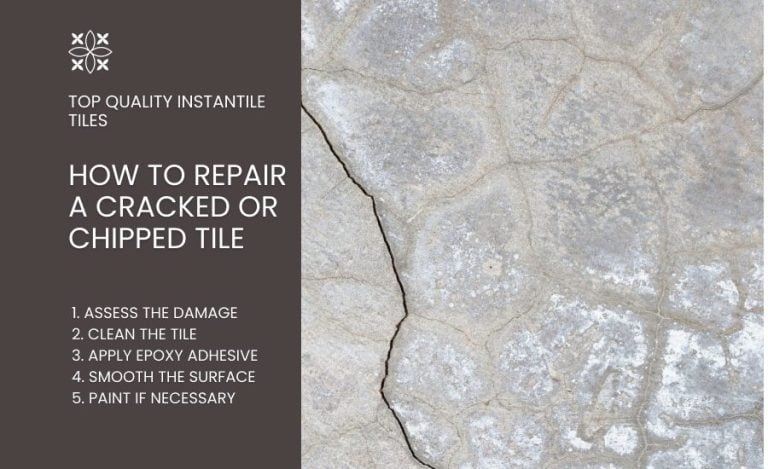Floor Tile Installation: Key Takeaways
- Large-scale tile installation presents unique challenges: managing materials, ensuring consistent quality, and avoiding project delays
- Common mistakes in large-scale projects include using the wrong adhesive, skipping surface prep, failing to allow expansion gaps, and poor grouting
- Best practices involve testing materials and maintaining strong quality control throughout the project
Installing floor tiles in large-scale projects can directly impact the appearance and functionality of the space.
This guide will break down:
- Key challenges in large-scale tile installation
- Common mistakes that can affect tile quality, durability, and aesthetics
- Best practices for flawless and long-lasting results
- FAQs about common concerns
- Innovative tiles by Ceramista that simplify installation
Mistakes to Avoid When Installing Spanish Floor Tiles in Large-Scale Projects
We mentioned the word mistakes. But what are they, and how can they affect your project? Here are several important things to keep in mind.
Choosing the Wrong Adhesive
Not all adhesives work with tiles, especially when dealing with different environments.
Using the wrong adhesive can result in weak bonding, leading to tiles lifting or cracking over time.
Example: You are installing tiles in a hotel lobby, and although the climate is humid, you are using a standard instead of a moisture-resistant adhesive. This can lead to detachment, cracking, and costly repairs within months.
Skipping Proper Surface Preparation
Failing to prepare the subfloor can result in uneven tiles, tripping hazards, and aesthetic issues. Uneven surfaces may also cause tiles to crack under pressure.
Example: You are pressed for time and rushing the surface preparation process in a retail space, applying tiles over an unlevel surface. The result? Costly reinstallation just a few months later.
Ignoring Tile Expansion Gaps
Some tile types, like Spanish tiles, can expand and contract with temperature changes, especially when installed outdoors or in spaces with extreme temperature variations.
Without adequate expansion gaps, tiles can push against each other, causing cracks and buckling.
Example: You are installing tiles in a corporate office without expansion joints. This can lead to expensive repairs and disruption of office operations after just one summer due to buckling and cracking.
Using Incorrect Grouting Techniques
Poor grouting can cause uneven spacing, discoloration, and water seepage in wet areas.
Example: If you’re using cement-based grout in a residential complex in a high-moisture environment without sealing, you might face staining and mold growth within months that can compromise aesthetics and endanger lives.
Poor Quality Control
Lack of supervision can result in inconsistent tile patterns, misalignment, and uneven spacing, affecting the final appearance of the project.
Example: You are installing tiles in a shopping mall, but there are multiple alignment issues. This can lead to an unprofessional appearance, costly tile replacements, and negative customer impressions.

Tile Installation Challenges in Large-Scale Projects
Installing floor tiles in hotels, commercial buildings, or residential complexes presents various obstacles that can result in delays, higher costs, or reduced quality.
Some of them include:
- Managing large quantities of tiles
- Ensuring consistency and quality across all spaces
- Keeping project timelines
- Finding and supervising experienced tile setters
By addressing these difficulties, you can avoid costly mistakes and keep your project on track.
Tips for Floor Tile Installation in Large-Scale Projects
To install tiles successfully in large-scale projects, you need careful planning, the right materials, and skilled execution.
Check out the best practices below that can help prevent costly mistakes for your business and ensure good results:
- Start small: Always test adhesive on a sample tile first.
- Get the base right: Clean and level your subfloor.
- Give tiles room to breathe: Leave expansion gaps to prevent buckling.
- Use high-quality grout: Match grout type to the space’s needs—especially in wet zones.
- Inspect often: Check spacing and alignment throughout the job.

Want To Cut Down on Tile Mishaps Before They Cost You? Ceramista Can Help
At Ceramista, we understand the challenges of large-scale flooring projects. That’s why we’ve developed a smarter solution for professionals who can’t afford delays, errors, or unexpected costs.
Our INSTANTILE interlocking system accelerates installation by up to nine times faster than traditional methods. No adhesives, no alignment issues, no compromise on finish.
What this means for your project:
- Faster turnaround across large surfaces
- Reduced labor costs and minimal on-site disruption
- Minimal-tool and adhesive-free installation
- Perfect alignment without the need for spacers
- Effortless tile replacement, with zero impact to surrounding tiles
Ceramista offers a curated range of finishes, including wood, stone, and metal effects, to suit any design vision, from contemporary commercial spaces to high-end residential builds.
Produced at Europe’s largest solar-powered tile plant, our collections combine Spanish craftsmanship with certified sustainability (ISO 14001, ISO 9001, LEED, FloorScore®).
Choose Ceramista — where efficiency, precision, and environmental responsibility come standard.
Common Mistakes in Large-Scale Tile Installation: FAQs
If you haven’t found the answer you were looking for, check out the section below to ensure you know how to avoid common mistakes and save time and money when laying tiles in large-scale projects.
How do I prevent cracking when using tiles in large projects?
To prevent cracking, make sure your surface is well prepared, use expansion joints, and choose a tile system that minimizes stress, like Ceramista’s interlocking design.
Why is moisture control important when installing tiles?
Moisture can weaken the effect of adhesives and lead to mold growth under the tiles. Test moisture levels before installation and, if needed, use moisture-resistant underlayment.
Can I speed up tile installation and still do a quality job?
Yes, you can speed up installation by using pre-cut tiles and high-quality adhesives. Experienced tile setters and interlocking tile systems, like Ceramista’s, can also help speed up the process.
What is important to remember when choosing grout for big tile projects?
When choosing grout, consider tile type, foot traffic, and moisture exposure.
- For commercial spaces in wet environments, choose epoxy-based grout.
- For wide joints in large-format tiles, choose sanded grout.
How can I align tiles properly in big projects?
To align tiles properly, use laser-guided layout tools, gridlines, and snap chalk lines.
Can I install tiles in phases when working on big projects?
Yes, but you need to carefully plan your work so that there is a seamless transition between sections. Prevent awkward transitions between phases by marking boundaries and sticking to consistent materials, adhesives, and grouting techniques.
What should I do if my large-scale project has an uneven subfloor?
An uneven subfloor can lead to tile cracking and lippage. Before installation:
- Use a self-leveling compound
- Grind high spots
- Fill low areas to create a smooth and stable base
What are the common mistakes to avoid when cutting tiles?
Common mistakes when cutting tiles include:
- Using dull blades
- Cutting too quickly
- Failing to account for expansion gaps
To ensure clean and precise cuts, use wet saws with diamond blades.




